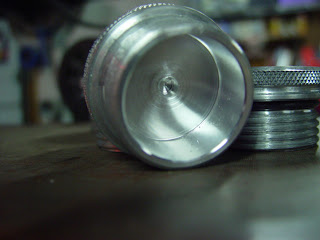 |
| The selectors for speed, feed, threading, carriage direction, etc. |
 |
| Thread cutting chart for my machine. Any lathe that can cut threads has a chart which lays out the position you will need to put the corresponding leavers in to cut whatever thread you want. |
 |
| Select lead screw which is designated by the red dot. |
 |
| Here's the tool I use to cut internal threads. This is where you need to be exact. This tool needs to be ground to 60 Degrees. |
 |
| Pictures is the finished bung for the gas cap. |
 |
| Just about finished |
 |
| I will post pictures of the finished caps, price and add a link in my store when they are complete. |









ok my turn........
ReplyDelete